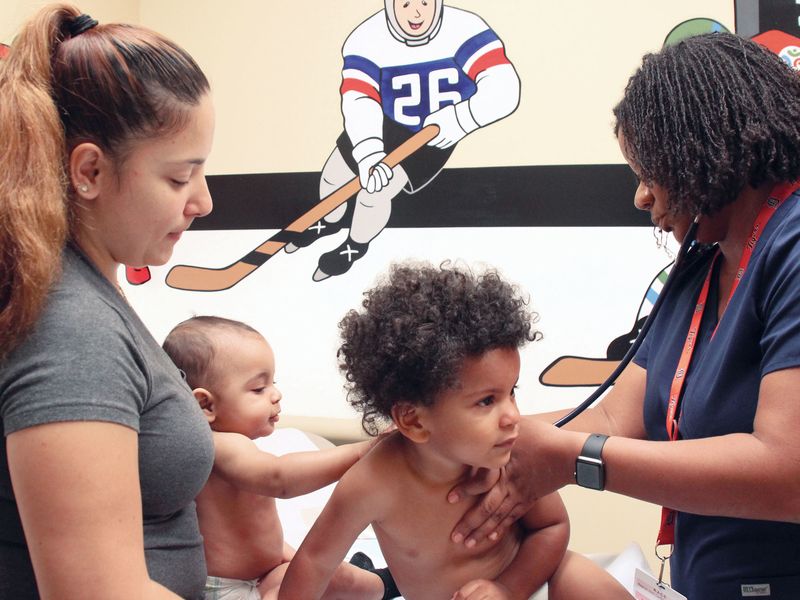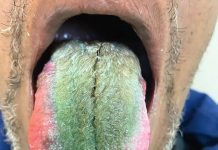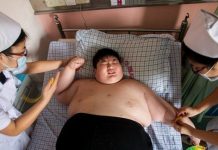 COMMUNITY HEALTH CENTERS
COMMUNITY HEALTH CENTERS
Pediatric care is one of the services provided by Community Health Centers in Orlando, Fla. The organization is part of a collaboration opening the new Heart of West Lakes Wellness Center in a low-income Orlando neighborhood.
Addressing patients’ cultural needs can build trust and strengthen their relationships with healthcare professionals, providers around the U.S. are learning.
When Ginger Marshall decided to move from Atlanta to Cleveland 10 years ago, a big motivation was to find medical providers who are knowledgeable about her needs and her life as a transgender woman. Marshall found a medical home at MetroHealth through the health system’s PRIDE Health Network. Established in 2007, PRIDE was Cleveland’s first clinic designed to provide healthcare services specifically to the LGBTQ communities.
“I want to be able to go to a clinic where my doctors understand and where they speak my language,” Marshall said. She began volunteering at PRIDE shortly after becoming a patient and took a job as an administrative coordinator there in February.
LGBTQ patients tend to face discrimination and substandard care from healthcare providers, many studies have shown. Because of this, these patients often delay or forgo getting needed medical services. Nearly one-sixth of LGBTQ adults reported experiencing discrimination in healthcare settings, and one-fifth of respondents said fear of discrimination was the reason they didn’t seek medical care, according to a 2018 survey conducted by National Public Radio, the Robert Wood Johnson Foundation and the Harvard T.H. Chan School of Public Health.
Such factors have contributed to LGBTQ people having generally poorer health compared with the rest of the population, including being at higher risk for chronic diseases. Stigma, insensitivity and lack of awareness about these patients’ medical needs among providers are significant contributing factors.
PRIDE offers a sense of community that is a big attraction for these patients, Marshall said.
But it’s the network’s approach to clinical care that has driven its growth from a single location operating only one day a week to seven locations, plus two specialty clinics for transgender youth, all of which are open at least five days a week. Part of the strategy is addressing patients’ social needs. PRIDE offers programs aimed at reducing food insecurity, unstable housing and unemployment, and provides enrollment assistance for people who need health coverage.
MetroHealth benefits from the trust PRIDE has established with the LGBTQ communities, Marshall said. PRIDE patients are less anxious about getting care from a MetroHealth specialist when a PRIDE provider makes the referral, she said.
“There was that focus that helped me feel comfortable walking in and knowing I didn’t have to explain a bunch of things,” she said.
A growing number of healthcare providers, including the PRIDE Health Network, have established programs designed to better connect them to vulnerable patients in underserved communities by providing comprehensive primary-care services targeted to their specific needs.
Previous community outreach initiatives have heavily focused on bringing healthcare services closer to where patients work and live. While this strategy has increased access, newer approaches seek to build on those efforts by incorporating communities’ cultures to inform how to best deliver care.
Health disparities among minority groups
LGBTQ HEALTH
LGBTQ individuals are at higher risk of developing mood disorders, eating disorders, and alcohol and substance use disorders Adult and adolescent men who have sex with men accounted for 69% of the 37,968 new HIV diagnoses in the U.S. in 2018 Approximately 21% of LGBTQ adults were smokers compared with 15% of cisgender, heterosexual individuals in 2016
LATINO HEALTH
Hispanics are about 50% more likely to die from diabetes or liver disease than whites Hispanics have a 23% higher rate of obesity Mexican-Americans and Puerto Ricans are about twice as likely to die from diabetes Sixty-eight percent of Hispanics have poorly controlled high blood pressure compared to 54% of whites
BLACK HEALTH
Black Americans ages 18-49 are two times more likely to die from heart disease than whites Black Americans ages 35-64 are 50% more likely to have high blood pressure Black Americans die at higher rates from heart disease and cancer
Source: Centers for Disease Control and Prevention
Defining cultural competency
A key element of cultural competency is providing patient-centric care that meets the patients’ wishes and values, whether they choose to define those values by their ethnic groups, ages or geographic origins, said Dr. Hasan Shanawani, president of American Muslim Health Professionals, based in Rolling Meadows, Ill.
“It is the professional ability to basically get at those values,” Shanawani said. Working within a patient’s cultural norms is key to identifying what their health needs are, he said.
Achieving higher-quality medical care requires making an effort to understand patients’ cultures, which is a core aspect of community health, said Dr. Isaac Dapkins, chief medical officer for the Family Health Centers at NYU Langone, a federally qualified health center that is part of the NYU Langone Health system in New York.
Most of Family Health Centers’ 72 clinic sites are in and around Brooklyn’s Sunset Park neighborhood, a diverse community that includes Puerto Rican residents as well as immigrants from Central and South America, China, Russia, and Yemen.
When the first wave of the COVID-19 pandemic came to New York City in March 2020, Sunset Park was one of the hardest-hit parts of the city. By last August, the community had a positivity rate of 6.7%, eight times greater than the average across the city.
Like many other providers last year, Family Health was forced to limit in-person visits to their sites for several months. That meant relying on virtual tools like telehealth and patient portals. A major concern with the switch was figuring out how to provide virtual care in a way that continued to meet patients’ cultural needs.
Much of the neighborhood’s immigrant community was anxious about telehealth, fearing that immigration agencies could access their information and arrest them, Dapkins said. These patients also come from populations statistically less likely to have the high-speed internet access needed for video calls. In light of these concerns, Family Health primarily relied on telephone visits, often with a patient, clinician and translator all on the line together.
Many such clinics hire front desk staff from the communities they serve, and not just because they may speak the same languages as their neighbors, Dapkins said. Having staff with similar backgrounds helps ease patients’ cultural discomfort, while also helping providers better understand how to approach those patients’ needs.
More broadly, Family Health partners with local community organizations, which have proven to be valuable resources. These groups can keep the clinics up to speed on what segments of the local community are in greatest need for health services.
Brooklyn resident Samuel Martinez, 66, has considered Family Health Center to be his medical home for nearly 30 years, and Dapkins is a major reason why, he said. Martinez has received treatment for a number of medical conditions, including leg ulcers and swelling related to severe inguinal hernias. The clinic also connected him to housing and health insurance enrollment assistance
“He knows the functions of my body 100%,” said Martinez, who emigrated from the Dominican Republic at 17. “He treats me like a son. He takes very good care of me.”
Family Health’s experiences both before and during the pandemic provide a blueprint for community care in the future, Dapkins said. “I’m convinced the next phase of successful community-oriented primary care is really filling in the space between visits with more information and assistance to help patients achieve their health goals,” he said.
Novant Health has spent years working to achieve greater health equity among traditionally marginalized populations, said Dr. Jerome Williams, senior vice president of consumer engagement.
The Charlotte, N.C.-based health system went beyond establishing a single community engagement and diversity, equity and inclusion office, instead embedding them into multiple departments across the organization. In its market, Novant set up clinics in medically underserved areas where patients can get help with both medical and social needs.
In 2017, Novant launched a community health worker pilot program that trains community members to help others connect with health and human services. Nearly 1,000 patients have found a medical home with Novant through this initiative, Williams said. Since its launch, patients who have completed the 90-day program with a community health worker have seen a 32% reduction in unnecessary emergency department visits, an 18% decrease in inpatient stays, and increases in medication adherence to follow-up care.
“What we’re talking about is not about a program or project. It’s about cultural change of an organization,” Williams said.
The decision to open three community health clinics in North Carolina within two years developed from the health system’s focus on the social determinants of health. Locating clinics where vulnerable populations need them most is crucial to reducing the number of “health deserts” in low-income communities, Williams said. NBA legend Michael Jordan donated $17 million to aid the project.
In addition, community members were involved in all aspects of planning for the Novant Health Michael Jordan Family Medical Clinics—from the design and location of the facilities to the kinds of services and resources available—to ensure the sites would provide the medical and social services residents truly need, Williams said.
“How do you care for a diverse population if you are not aware of the differences and how to engage with and connect with those populations?” Williams said.
 NOVANT HEALTH
NOVANT HEALTH
Novant Health’s Michael Jordan Family Medical Clinic in Charlotte, N.C., was temporarily converted into a respiratory assessment center in April 2020, seeing more than 12,000 patients and performing more than 14,000 tests that year.
Technological applications
Helping healthcare providers and health insurers better engage with their diverse patient populations on a more cultural level is the concept behind North Hollywood, Calif.-based ConsejoSano. The healthcare technology platform uses data from its provider clients as well as public information based on a patients’ ZIP codes to create personalized messaging in 31 different languages.
Spanish-speaking patients at ConsejoSano’s provider clients had a “no-show” rate of 76% before the implementation of a reminder system that sends three text messages, adapted to patients’ cultural identities, about their appointments. After that program rolled out, no-shows among these patients plummeted to 29%, according to a study conducted by University of California and Los Angeles researchers using ConsejoSano data.
The healthcare sector has underperformed when it comes to engaging with diverse patients, especially given the nation’s shifting demographics, ConsejoSano founder and CEO Abner Mason said. Population projections indicate the U.S. will be a majority-minority country three decades from now.
“One of the key needs is to build trust, and that’s going to require treating the patient better,” Mason said. “If you have a healthcare system that can’t do a good job in serving what is becoming the majority of patients—that’s a problem that we have to address.”
Looking ahead
In Orlando, Fla., local community organization Lift Orlando, local health systems AdventHealth and Orlando Health, insurer Florida Blue, and federally qualified health center Community Health Centers, are collaborating to build a 30,000-square-foot, two-story facility that will provide medical and social services, mostly to residents of the city’s predominantly Black Parramore neighborhood. The Heart of West Lakes Wellness Center is scheduled to open next year.
In addition to primary-care services, the building will feature a fitness center and community meeting space, and will offer residents classes on financial well-being. Like at Novant Health in North Carolina, the leaders of this initiative sought input from community members.
Orlando Health offers patients assistance that goes beyond their medical needs, said Quibulah Graham, the system’s corporate director of diversity and minority business development. Staff members will visit patients’ homes after hospital discharges to assess whether they are having mobility issues and to help them with important tasks such as buying groceries, transportation support, and rental and utility assistance, Graham said. The result has been fewer readmissions and ED visits that can be tied to patients’ nonclinical needs, she said.
The Heart of West Lakes project is an opportunity to engage even more with residents, many of whom are Orlando Health patients, Graham said.
“Being able to relate to patients allows them to open up and increase the sense of trust that they have for the healthcare community,” Graham said. “That opens the doors also to being able to communicate some of their concerns and their fears instead of waiting until the last minute when they result in a health problem.”
The initiative also is a way to provide a community-focused approach to addressing socioeconomic problems that have contributed to poor health outcomes among residents of the downtown neighborhood for decades, said Lift Orlando President Eddy Moratin.
With a population of just over 6,100, Orlando’s Parramore district has an unemployment rate of nearly 24% and a $15,000 median household annual income, according to a 2020 city report. The unemployment rate in the city as a whole was 6.9%, the same report found. U.S. Census data show median household income in Orlando was $51,000 in 2020. More than 40% of neighborhood children had at least one chronic health condition.
During the planning process for the new wellness center, there was a lot of debate over whether a clinic that provides medical services alone would be sufficient to narrow health disparities in the area, Moratin said. “From our perspective, access is not enough,” he said. “Having a clinic in the neighborhood is not a guarantee that people who live in the neighborhood will use it.”
Community clinics should see themselves as resources for the entire area they want to serve, Moratin said. That’s why a community center makes up more than half of Heart of West Lakes’ footprint, he said. Providing a space for locals could be an “organic, more natural way” for residents to connect to healthcare services they otherwise may not have sought, he said.
“We just wanted to not only close the health gap, but we also wanted to see actual engagement of that healthcare provider in the community by making the center first about community,” Moratin said. “It’s community-based community health.”
Source link : https://www.modernhealthcare.com/safety-quality/achieving-greater-cultural-competency-respecting-patients-identities











